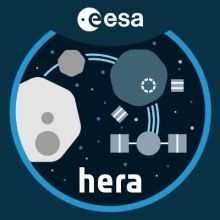Successful HERA Launch: protecting Earth from asteroids

October, 7, 2024 (16:52 CEST - 14:52 UTC), the European Space Agency's Hera mission, Europe's first planetary defence mission and contribution to an international experiment, was launched successfully from Cape Canaveral Space Force Station in Florida, USA.
Hera is a binary asteroid rendezvous mission and carries a scientific payload, one of which is the thermal infrared camera TIRI, to which VITO Remote Sensing contributed.
The Hera mission is Europe's contribution to an international experiment in planetary defence to protect Earth against asteroid impacts. Targeting the binary asteroid system Didymos - Dimorphos, the Hera mission follows on from NASA's DART mission in 2022, which successfully tested an asteroid deflection by impacting Dimorphos, the smaller body of the binary system.
The Diymos binary system is the smallest and fastest-spinning asteroid system ever visited by a space mission.
Hera will use advanced imaging tools and deploy two CubeSats, Milani and Juventas, to analyze the asteroids' structure and composition.
TIRI, thermal infrared imager
Together with the Japanese agency JAXA and Belgian partner ROB (The Royal Observatory of Belgium), VITO Remote Sensing contributed to the development of TIRI, a thermal infrared imager and one of the scientific instruments onboard Hera.
TIRI operates in the thermal infrared wavelength regime and enables us to determine the surface temperature, surface content and characteristics.

VITO Remote Sensing and the ROB contributed to
- analysis of the instrument testing
- design and implementation of the image processing (thermography and geometric)
- in-flight calibration
- instrument operations
- data pipeline and archiving system
Hera is a relatively small-scale mission in interplanetary terms, nevertheless it will help turn the 'kinetic impactor method' for planetary defence into a well-understood and potentially repeatable technique to avert future asteroid impacts, demonstrate new technologies in deep space and provide world-leading science.

